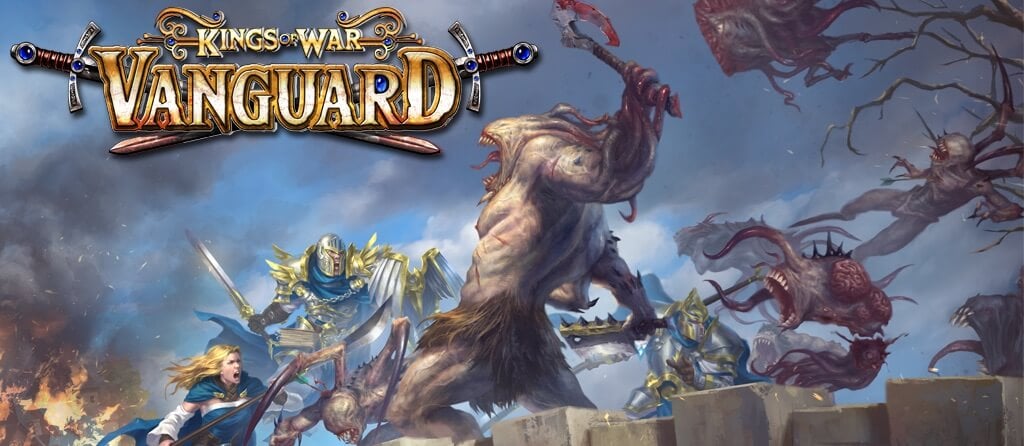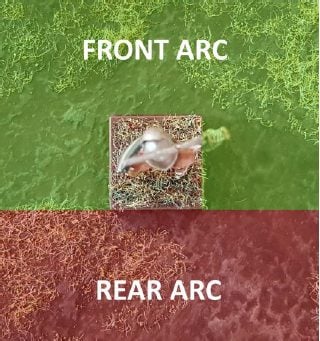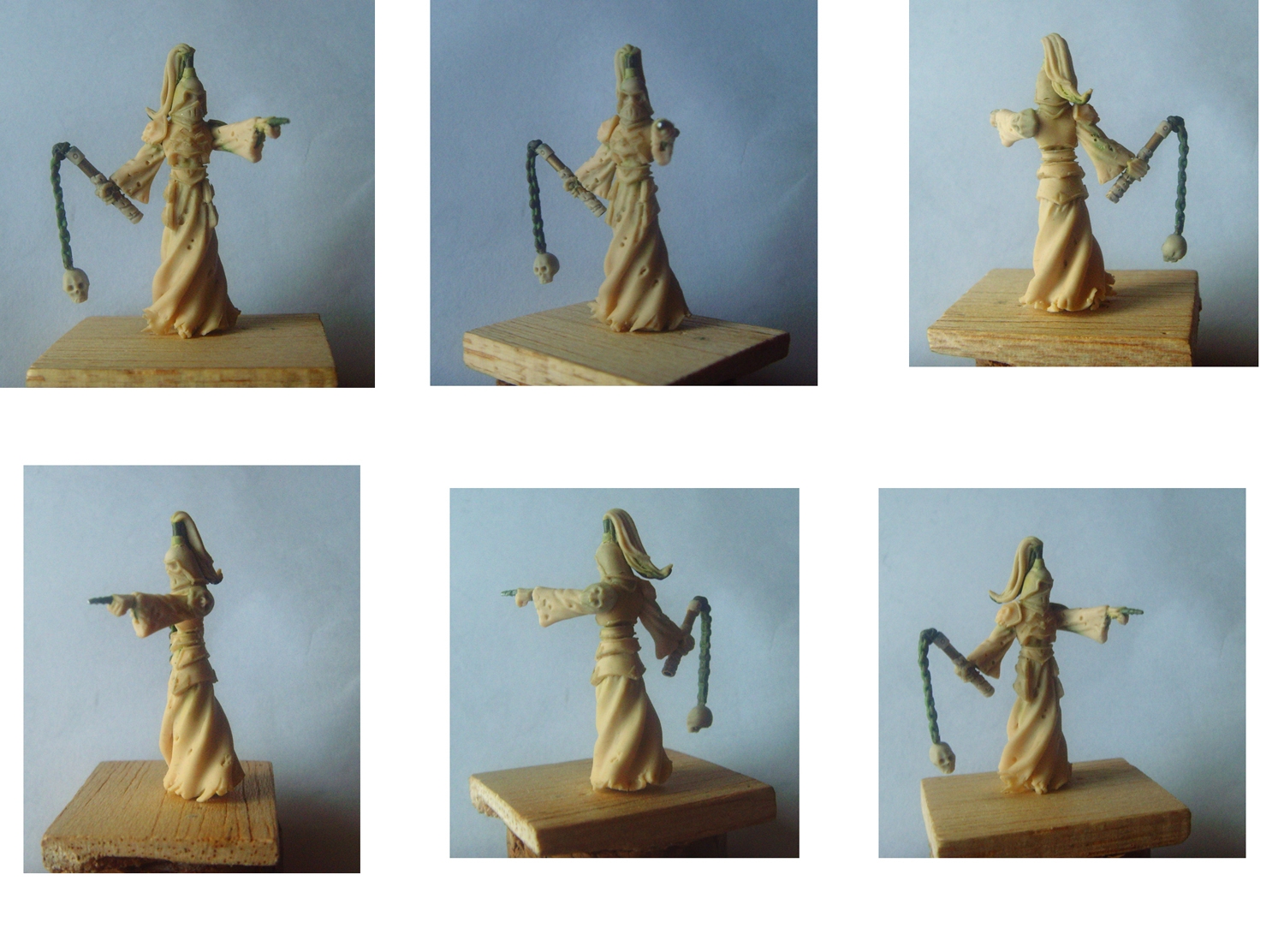Kings of War: Vanguard – More Details About Combat
24th Oct 2017
Rob Burman
Kings of War: Vanguard will be launching on Kickstarter on November 1st. Throughout this week, we’ll be exploring the game in more detail and giving you a taste of the rules. In today’s blog, we’re describing some extra elements of combat.

After explaining the basics of combat in yesterday’s blog, today we’ll delve a little more into some of the other elements you can expect to encounter when scrapping it out!
ENGAGING A MODEL
First of all let’s look at how you’ll engage enemies in close combat. Models in base-to-base contact with an enemy model are Engaged. When a model Engages another, place the front of the moving model’s base flush against the target’s base on the side contact was made, as centrally as possible. A Walk (or Run) action to Engage an enemy model does not trigger a free Melee action.
A model Engaged in Melee may attempt to break away. Make 1 Armour Roll for each enemy model the activating model is breaking away from. Models that are knocked down are ignored. The model will lose a wound for each failed save. If the model is still alive, it may make a Run action in any direction.
HIP TO BE SQUARE
Why square bases? This is one of the questions that has cropped up quite a bit since we announced Vanguard. The easy answer is that because we want the models in Vanguard to be used in Kings of War and vice versa, we needed to put them on square bases, rather than circular ones. However, the other benefit is that it allows us to do interesting things with facing in the rules.

Models in Vanguard are mounted on square bases with the back edge of the base defining the rear arc of the model. Models must be glued on their bases clearly facing one of the straight edges so it is obvious which edge is then the back edge.
A model can potentially see anything in its front arc (subject to Line of Sight). Line of Sight (LOS) to anything wholly in the model’s rear arc is considered to be Blocked.
If you attack a model in their rear arc, you’ll get a bonus. When shooting your attack gains Piercing (1), which means the armour value of your opponent is +1. This makes it more difficult to make the armour save. Whereas, if you’re attacking in melee, you’ll gain Crushing Strength (1), which has the same effect as Piercing. As a result, there’s a definite bonus for strategic positioning. What’s more, some of the special rules apply when attacking in the rear. For example, the Goblin Sneaky rule means that their attacks will explode on a 7 and 8 if they attack from behind.

YOU’VE GOT A NERVE
Finally in today’s blog, we’ll briefly describe Nerve. Although the term will be familiar to those who play Kings of War, in Vanguard it works a little differently. A model’s Nerve value is a representation of its morale, willpower and self-control. If things start to go wrong, or an individual is required to do something they aren’t comfortable with, it might take a test of nerve to overcome it, or the Warband will struggle to act as a coherent fighting force.
The Nerve value will mainly come into effect once a Warband is broken. A Warband is broken if it has less than half the number of starting models remaining (by model count). Determine if a Warband is broken at the start of each Round. Once a Warband is broken, each unengaged model in the Warband must make a Fallback Check when it activates. If performing a group action, use the Nerve value of the model nominated for the group to make the Fallback Check.
A Fallback Check requires the model to roll a dice and equal/beat its Nerve value. If it fails to make the test it will immediately move towards its own table edge along a direct a path as possible and as far as possible up to twice its Speed in inches. Once a model has fallen back, it cannot have any further actions played on it that turn. There’s even the chance the model will run off the board, if they reach the table edge!
Fallback actions are particularly interesting towards the end of the game, as you’ll potentially end up running away from an objective or fight. Thematically this fits in nicely because as a fighter sees their comrades die in battle, it’s likely they would lose their nerve and decide to run away! It’s worth noting that – a little like Kings of War – some characters do have the Inspiring special rule. This allows models within 6” to re-roll a failed Nerve test.

 GBP
GBP  EUR
EUR  USD
USD